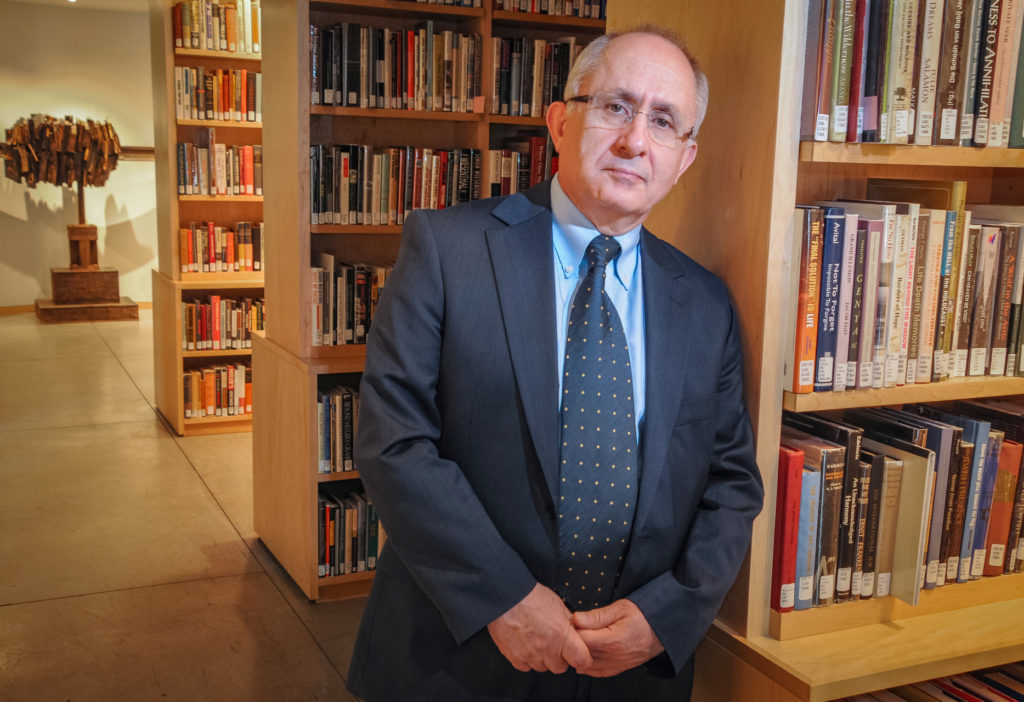Taner Akçam unearths evidence of Ottoman decision to ‘annihilate’ Armenians

Letters referring to a decision to “annihilate” all Armenians have been authenticated as the work of Bahaettin Şakir, one of the architects of the Armenian Genocide, according to a new study by Clark University history professor Taner Akçam. His paper, “When was the Decision to Annihilate the Armenians Taken?” appears in the Journal of Genocide Research.
Akçam writes that the signatures on the two letters, dated March 3 and April 7, 1915, match those of Şakir on other documents. Akçam also says he has unearthed new documents from the Ottoman Archives showing initial decisions to exterminate groups of Armenians were taken by a local branch of the paramilitary organization, Teşkilat-ı Mahsusa (Special Organization), led by provincial governors in December 1914.
The first letter studied by Akçam states that the Committee of Union and Progress (CUP) “has decided to annihilate all of Armenians living within Turkey, not to allow a single one to remain, and has given the government broad authority in this regard.” The second letter reiterates this message. Previously, the authenticity of these letters was questioned but, according to Akçam, signature comparison indicates they were authored by Şakir — who, as head of the Teşkilat-ı Mahsusa, helped to plan and carry out the genocide.
The Armenian Genocide, the Ottoman government’s systematic extermination of 1.5 million Armenians, was carried out during and after World War I. While present-day Turkey accepts that many Armenians living in the Ottoman Empire were killed in clashes with Ottoman forces during the war, it continues to contest the 1.5 million figure and denies that the killings were systematically orchestrated and constitute a genocide. This denial — which continues despite a recent United Nations Joint Allegation Letter demanding that the Turkish government investigate the treatment of Armenians from 1915 to 1923, establish the truth, and make reparations — has hinged on the patchy archival record.
“These letters indicate there was an actual, conscious decision taken to annihilate the empire’s Armenian population, and that it was taken before March 3, 1915,” says Akçam. “Moreover, there were other related decisions that preceded this final one, as a series of documents we discovered in the Ottoman Archives shows.”
These documents suggest that initial decisions to eliminate groups of Armenians were not taken by the Central Committee of the CUP and/or by the central government, but by governors in the provinces of Van and Bitlis.
“In their communications — both with Istanbul and with one another — the governors did not see the need to use vague language or euphemisms in referring to the annihilation of the Armenians, but spoke of it openly, even offering a number of tangible ideas regarding how such an extermination could or should be carried out,” Akçam says.
Policy decisions regarding the elimination of Armenians, while initially made at the regional level, would eventually serve to pressure the central government in Istanbul to adopt a more radical overall policy, he concludes.
Akçam is professor of history at Clark and holds the Robert Aram and Marianne Kaloosdian and Stephen and Marian Mugar Endowed Chair of Armenian Genocide Studies. One of the first Turkish intellectuals to acknowledge and openly discuss the Armenian Genocide, The New York Times referred to him as “The Sherlock Holmes of the Armenian Genocide.” His 2018 book, “Killing Orders: Talat Pasha’s Telegrams and the Armenian Genocide,” includes a document — a “smoking gun” — that points to the Ottoman government’s central role in planning the elimination of its Armenian population. A previous work, “The Young Turks’ Crime Against Humanity: The Armenian Genocide and Ethnic Cleansing in the Ottoman Empire,” was co-winner of the Middle East Studies Association’s Albert Hourani Book Award and named one of the “Best Books on the Middle East” by ForeignAffairs.com.
Among his many honors, Akçam received the 2018 Outstanding Upstander Award from the World Without Genocide organization; the Hrant Dink Spirit of Freedom and Justice Medal from the Organization of Istanbul Armenians and the Hrant Dink Freedom Award from the Armenian Bar Association (both in 2015); and the Heroes of Justice and Truth award at the Armenian Genocide Centennial commemoration in May 2015.


